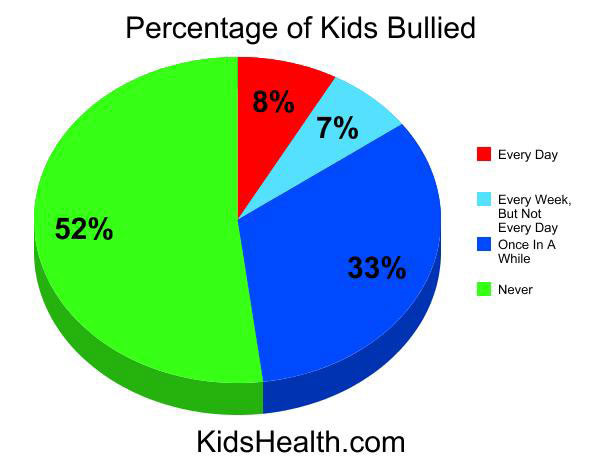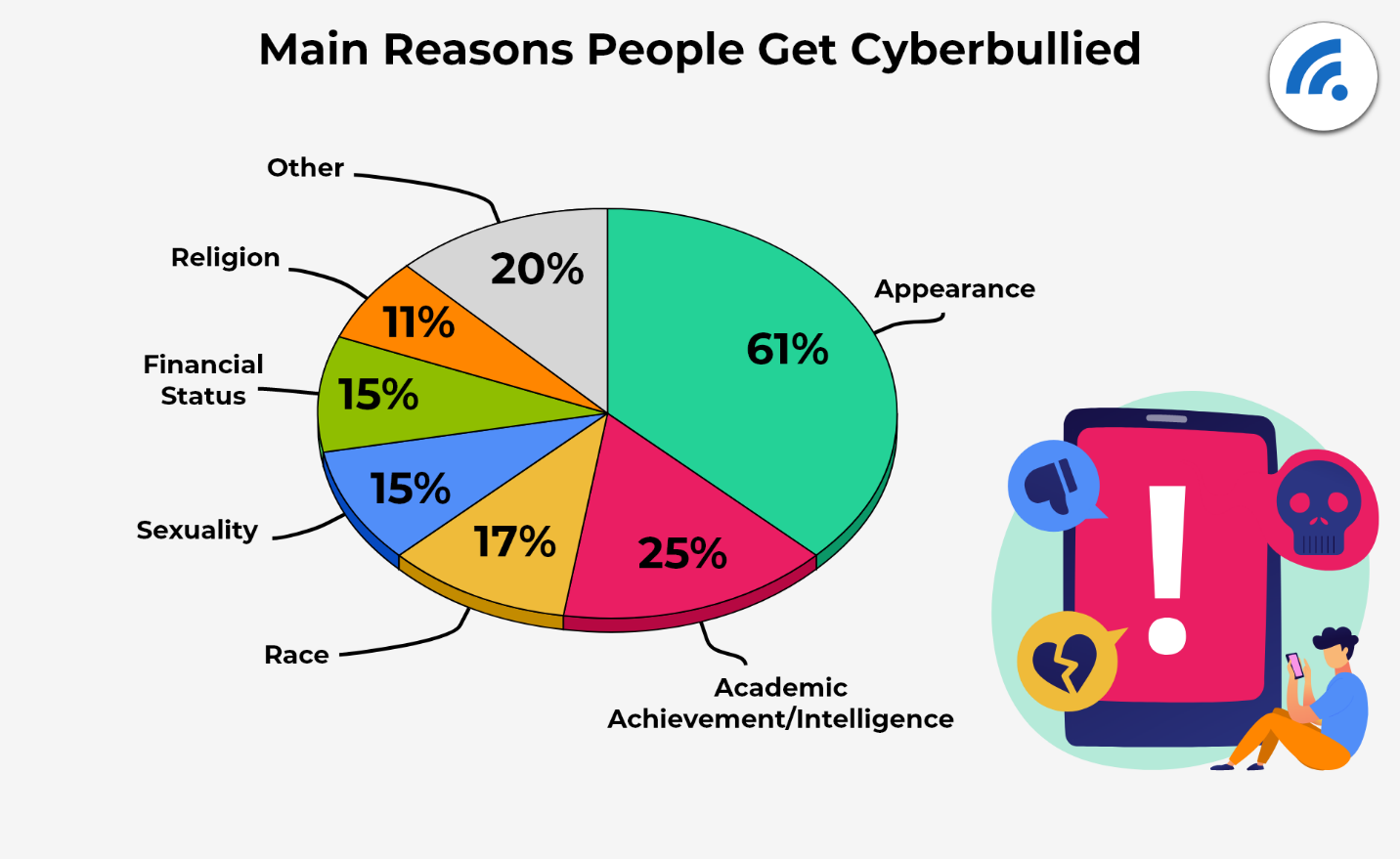-
General Statistics on Bullying – 2021
- According to bully statistics, the percentage of students varies anywhere between 9% to 98%.
- A study was conducted by the US National Library of Medicine, which explored bullying over 1025 students at the college level by students and teachers, it was found that out of 1025 undergraduates’ students, 24.7% bully other students occasionally while 2.8% do it very frequently.
- 4.2% of students had been bullied by teachers occasionally and 5% very frequently. 3.2% of students had bullied other students occasionally and 1.9% very frequently.
- 49% of children in grades four to 12 have been bullied by other students at school level at least once.
- 23% of college goers stated to have been bullied two or more times in the past month.
- 20% of the US students in grades nine to 12 reported being bullied.
- 71% of youth have witnessed bullying at school.
- 70% of school staff have reported being a witness to bullying.
- Statistics on Facebook bullying found that at least 1 million kids were bullied on Facebook in 2017 alone.
Anti-Bullying
What is Bullying?
Bullying is unwanted, aggressive behavior that involves a real or perceived power imbalance. The behavior is repeated or has the potential to be repeated over time. Both kids who are bullied and who bully others may have serious, lasting problems.
In order to be considered bullying, the behavior must be aggressive and include:
- An imbalance of power: kids who bully use their power, physical strength, access to embarrassing information, or popularity, to control or harm others. Power imbalances can change over time and in different situations, even if they involve the same people.
- Repetition: bullying behaviors happen more than once or have the potential to happen more than once.
Bullying includes actions such as making threats, spreading rumors, attacking someone physically or verbally, and excluding someone from a group on purpose.
Risk Factors for Bullying
No single factor puts a child at risk of being bullied or bullying others. Bullying can happen anywhere—cities, suburbs, or rural towns. Depending on the environment, some groups, such as lesbian, gay, bisexual, or transgendered (LGBT) youth,11 youth with disabilities,12 and socially isolated youth, may be at an increased risk of being bullied.
Generally, children who are bullied have one or more of the following risk factors:
- Are perceived as different from their peers, such as being overweight or underweight, wearing glasses or different clothing, being new to a school, or being unable to afford what kids consider “cool”
- Are perceived as weak or unable to defend themselves
- Are depressed, anxious, or have low self esteem
- Are less popular than others and have few friends
- Do not get along well with others, seen as annoying or provoking, or antagonize others for attention
However, even if a child has these risk factors, it doesn’t mean that they will be bullied.
“The child who is overweight is the most likely to be bullied.” -Journal of Pediatrics
General Statistics on Bullying – 2020
- According to bully statistics, the percentage of students varies anywhere between 9% to 98%.
- A study was conducted by the US National Library of Medicine, which explored bullying over 1025 students at the college level by students and teachers, it was found that out of 1025 undergraduates’ students, 24.7% bully other students occasionally while 2.8% do it very frequently.
- 4.2% of students had been bullied by teachers occasionally and 5% very frequently. 3.2% of students had bullied other students occasionally and 1.9% very frequently.
- 49% of children in grades four to 12 have been bullied by other students at school level at least once.
- 23% of collegegoers stated to have been bullied two or more times in the past month.
- 20% of the US students in grades nine to 12 reported being bullied.
- 71% of youth have witnessed bullying at school.
- 70% of school staff have reported being a witness to bullying.
- Statistics on Facebook bullying found that at least 1 million kids were bullied on Facebook in 2017 alone.


